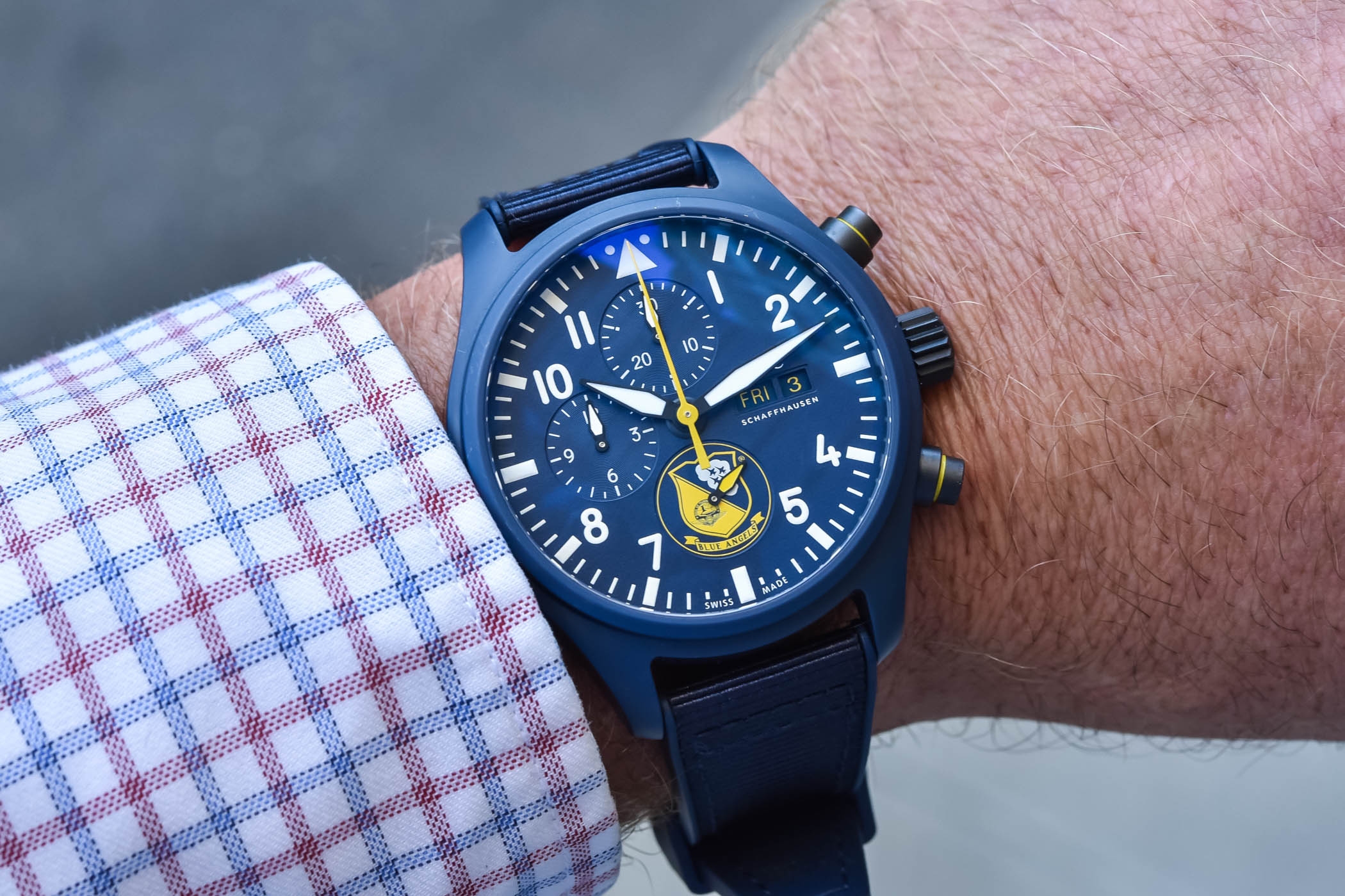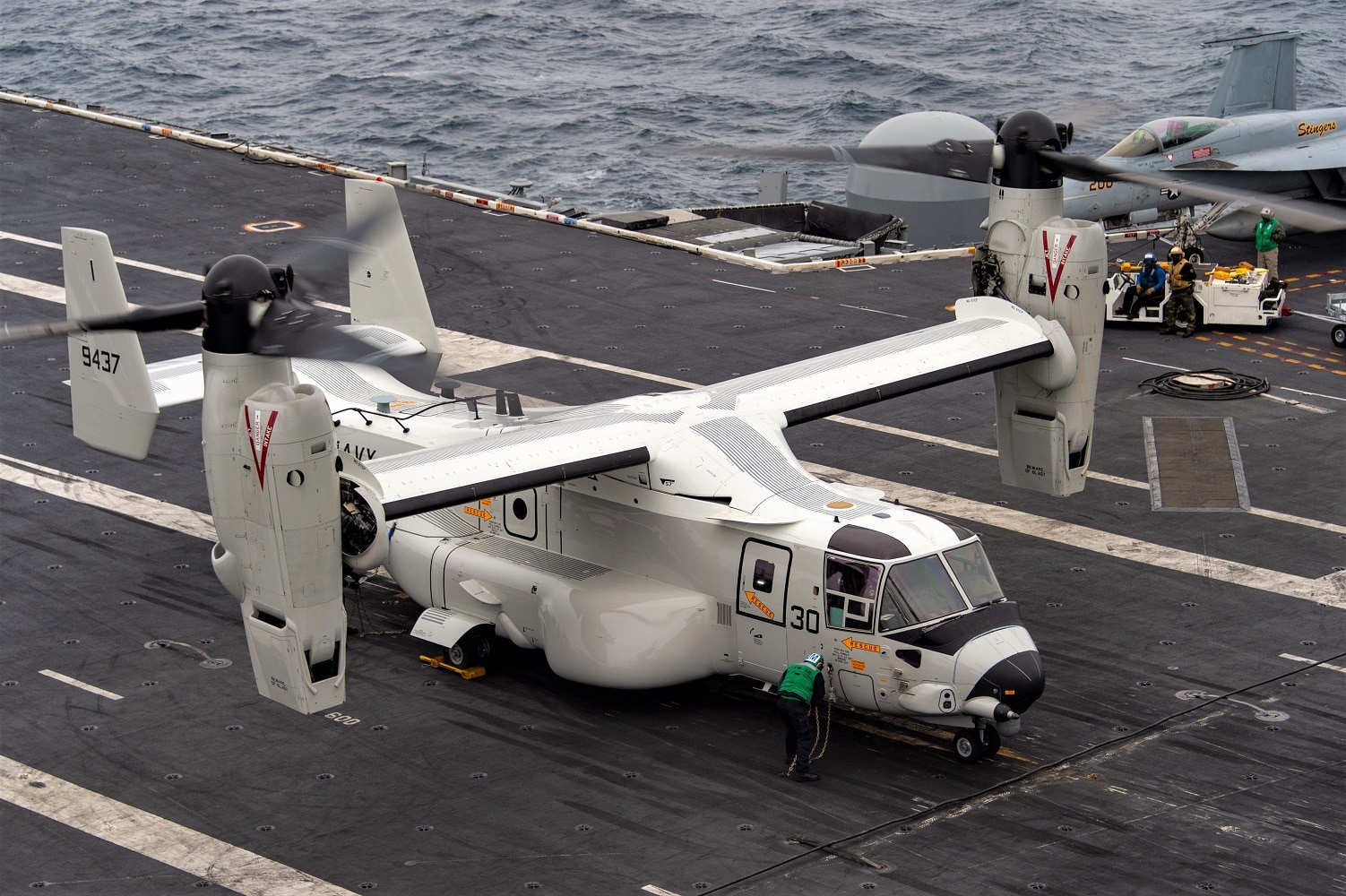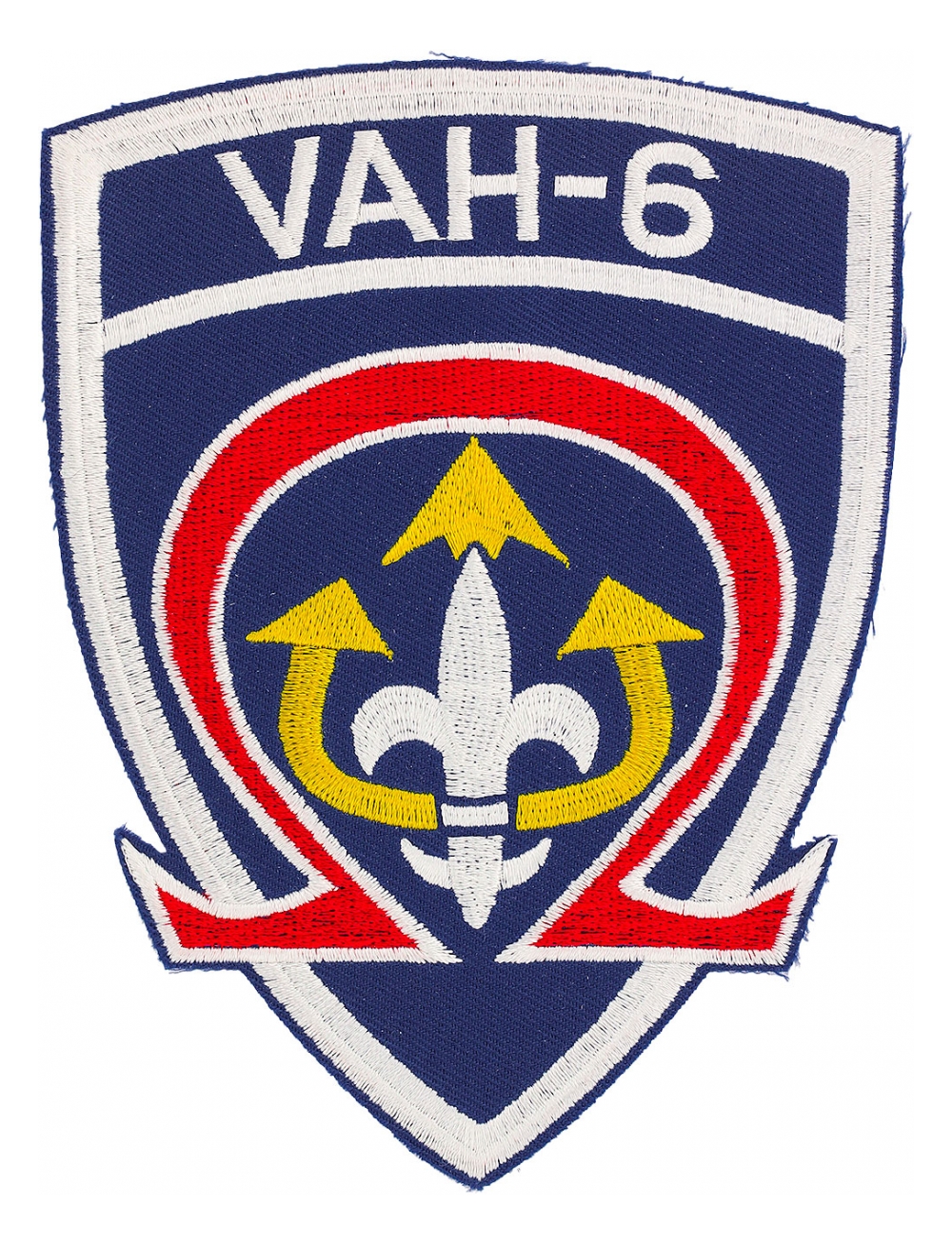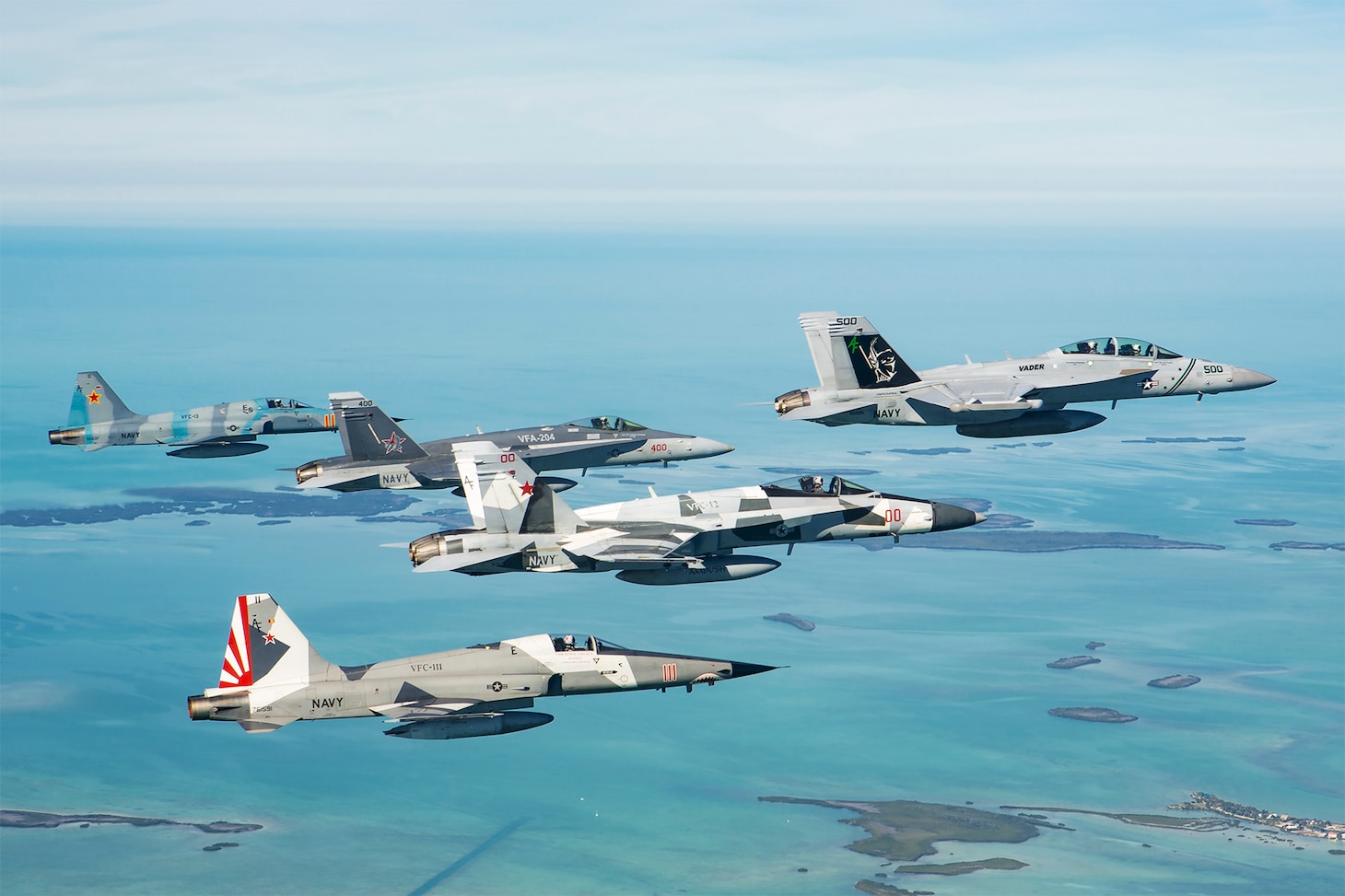U.s. Navy Squadrons - Two crossed lines forming an 'X'. Shows how to close an interaction or dismiss a notification.
Home Chevron Icon Indicates an expandable section or menu, or sometimes previous/next navigation options. Army and defense
U.s. Navy Squadrons

Twitter icon Stylized bird with open mouth, tweeting. Twitter LinkedIn icon The word "i". LinkedIn Flipboard Icon Stylized Letter F. Flipboard Facebook Icon Letter F. Facebook Email Icon Envelope. Shows the ability to send email. Email link icon Chain link image. Symbolizes the URL of a link to a web page. Copy the link
Navy Relieves Growler Squadron Commander Aboard Uss Harry S. Truman
In terms of absolute tonnage and technology, the US Navy is the world's leading maritime military power.
But the US Navy operates more than just naval ships and essentially has its own naval aviation. The Marine Air Arm participates in a variety of mission types, ranging from search and rescue to special operations to anti-submarine warfare.
The following graphic from CI Geography shows each part of the US Navy's air force as of May 2015 (if you don't want to squint, you can view a much larger version of the graphic here):
In terms of air power, the Navy relies heavily on the F/A-18E Super Hornet. There are 35 Super Hornet fighter squadrons in the air force. In addition, there are two additional F/A-18 Hornet strike squadrons.
Electronic Attack Squadron (vaq) 131 At Red Flag 20 1
Super Hornets and Hornets often work in close cooperation with EA-18G Growlers. There are 15 carrier tactical electronic warfare squadrons in the air arm. These aircraft have the primary mission of conducting electronic warfare and jamming enemy radars.
Of course, Naval Air Arm capabilities go beyond just strike squadrons and electronic warfare. Also included in the air wing are P-8A Poseidons, the world's most advanced search aircraft, and several squadrons of MH-60 Seahawks, some of the world's most capable helicopters.
The United States first took steps to develop its naval aviation capabilities in 1910, and Lt. Theodore G. "Spuds" Ellyson became the first naval aviator on April 12, 1911. Subsequent advances in the Navy - aviation was to play a decisive role in the world . The Second War, especially against Imperial Japan in the Pacific. The US Navy and US Marine Corps have a well-defined set of principles governing the designations given to their aircraft squadrons. This marking system was introduced in 1922 and, although there have been changes and additions over time, the system as a whole is still used today.

The US Navy and US Marine Corps squadron insignia includes a combination of letters and numbers, each with a precise meaning. From left to right, the label contains the following three components:
Us Navy Aviation Patch Attack Va 34 Strike Fighter Squadron 1980s A 6 Intruder
So, for example, VP-1 is the designation for patrol squadron one, where "V" stands for heavier than air and the class letter "P" stands for patrol, while ZP-1 is the designation for airship patrol squadron. One, with a "Z" for lighter than air.
Two or more class letters may follow the "V". In such designations, subsequent letters usually closely denote the preceding class: for example, VAH-1 stands for Heavy Attack Squadron One. However, there are exceptions to this rule. In a designation such as VAW-123, the "AW" should be treated as an unbreakable combination meaning airborne early warning and has nothing to do with the "A" for attack.
The following is a list of insignia used or used by current squadrons of the United States Navy and United States Marine Corps.
This designation first came into use in 1945, when Carrier Bomber (VB) and Torpedo Bomber (VT) squadrons were reclassified as Attack Squadrons. It was discontinued with the retirement of the Grumman A-6 Intruder in 1997.
Marines F 35c Squadron Declared 'safe For Flight'
The Navy used this designation for squadrons operating all-weather variants of the Douglas AD Skyraider. It was halted by the disappearance of wide-body Skyraiders from the Navy's inventory, and squadrons equipped with newer all-weather attack aircraft such as the Grumman A-6 Intruder were given "regular" VA designations.
This designation was first given in the 1950s to former composite (VC) squadrons flying the North American AJ Savage. VAH squadrons existed until the early 1970s.
The Navy used this designation in the 1950s for a very small number of Lockheed P2V Neptune units that were specifically tasked with laying mines.
This designation was only used for a very short time by a small number of reserve units flying the Douglas KA-3B Skywarrior variant of the tanker. Most squadrons that operated KA-3B tankers did so while still designated as heavy attack squadrons, and squadrons that operated other types of tanker-capable aircraft, such as the Grumman KA-6D Intruder, did so without the change marks.
End Of The Line For The Fleet's Legacy Hornets
Only one squadron ever carried this designation, VAL-4 flying the North American OV-10 Bronco between 1969 and 1972.
This designation was used in the early 1950s for photo-reconnaissance squadrons equipped with heavy carrier-capable aircraft such as the North American AJ-2P Savage. This was halted by the death of the last photo-reconnaissance Douglas RA-3B Skywarriors in the early 1970s.
This designation was introduced when the Douglas EKA-3B Skywarrior variant was introduced in the late 1960s. Previously, dedicated electronic warfare assets were part of composite (VC) or early warning (VAW) squadrons.
This designation was first given in the late 1950s to former composite (VC) squadrons flying the Douglas AD-5W Skyraider. Since then, all airborne early warning units have been designated as VAW.
Hsl 74 Demon Elves Squadron Patch –sew On
Carrier-based bomber squadrons, designated VB, first appeared in the early 1920s. After World War II, all remaining VB units were renamed Attack Squadrons (VA).
Although most WWII-era fighter units routinely flew ground attack missions, some squadrons were specifically designated as VBF during the war. The VBF designation was discontinued after the war, and until the introduction of the McDonnell-Douglas F/A-18 Hornet, the Navy's squadron flying tactical fighters performed ground attack duties while designated VF.
From 1942 to 1945, the designation VC was assigned to squadrons consisting of fighter and bomber aircraft and flown by escort carriers. All such units were dismantled by post-war mothballing of the supporting carriers.

The second wave, which began in 1945 and continued into the late 1950s, consisted of large units that provided active carriers with detachments of specialized night attack, heavy attack, photographic reconnaissance, electronic warfare, and airborne early warning aircraft. Many such detachments were later transformed into dedicated VA(AW), VAH, VFP, VAP and VAW squadrons.
Us Navy Squadrons Us Navy Veteran Us Veterans Day Navy Unisex Hoodie All Over Print
The third wave, between the 1960s and 1980s, were former utility (VU) squadrons that performed various non-combat support tasks such as target tracking and specialized training.
A unique designation worn in the late 1940s by units responsible for the development and evaluation of night flying tactics and equipment.
For a short time in the 1950s, this designation was given to the heavy (VAP) and light (VFP) photographic reconnaissance squadrons, but soon reverted to their original designations.
Squadrons of this type were formed in the late 1930s to provide reconnaissance floatplanes for naval cruisers. This designation was abolished at the end of World War II.
Us Navy Official Va 42 Squadron Patch
Photography squadrons probably made more new markings than any other type of squadron in the Navy. The designation VD was in use during the years of World War II, to be replaced by VJ after the war.
This is one of the oldest aircraft squadron designations in the Navy, in use from the early 1920s until 2006, when it was discontinued with the retirement of the Grumman F-14 Tomcat.
On 25 March 1983, certain VFA squadrons were changed from "Fighter Attack Squadron" to "Strike Fighter Squadron".
The Navy used this designation for a short time between the mid-1950s and early 1960s. Since all new tactical fighters are radar-equipped and therefore all-weather capable (at least in theory), this designator was deemed redundant and was discontinued.
Vrc 30 Fleet Logistics Support Squadron Patch
Introduced in the late 1980s, where several former composite (VC) squadrons were therefore redesigned to reflect their role in adversary fighter training.
The designation VF(N) was established during the Second World War years for radar fighter squadrons. In the mid-1950s this designation was dropped in favor of the VF(AW) variant to reflect the true role of the new all-weather radar-equipped aircraft.
The VFP designation is assigned to squadrons equipped with photo-reconnaissance variants of carrier-capable tactical fighter aircraft. First introduced in the late 1940s, it was discontinued with the death of the Vought RF-8G Crusader in the 1980s.
In use 1942-1943 to designate fighter squadrons assigned to service on the US Navy's first escort carrier. VGF squadrons were renamed VF in 1943.
U.s. Navy Sailors Launch An F/a 18f Super Hornet, Assigned To Strike Fighter Squadron 2,
In service 1942-1943 for designation of reconnaissance squadrons assigned to service on the US Navy's first escort carrier. VGS squadrons were renamed VC in 1943.
Between the 1920s and 1945, the designation VJ was assigned to squadrons that had support tasks such as liaison, logistics and target loops.
For a short period between 1945 and 1950, the VJ designation was used by squadrons flying land-based photo-reconnaissance aircraft.

VN was the designation in use for dedicated training squadrons until 1945, when it was replaced by VT.
N Pq548 0193 Atlantic Ocean (april 8, 2019) An F/a 18f Super Hornet, Assigned To The Red Rippers Of Strike Fighter Squadron (vfa) 11, Lands Aboard The Nimitz Class Aircraft Carrier Uss Harry S. Truman (cvn
VO squadrons consisted of observation seaplanes based on cruisers and battleships. The label has been discontinued



Post A Comment:
0 comments so far,add yours